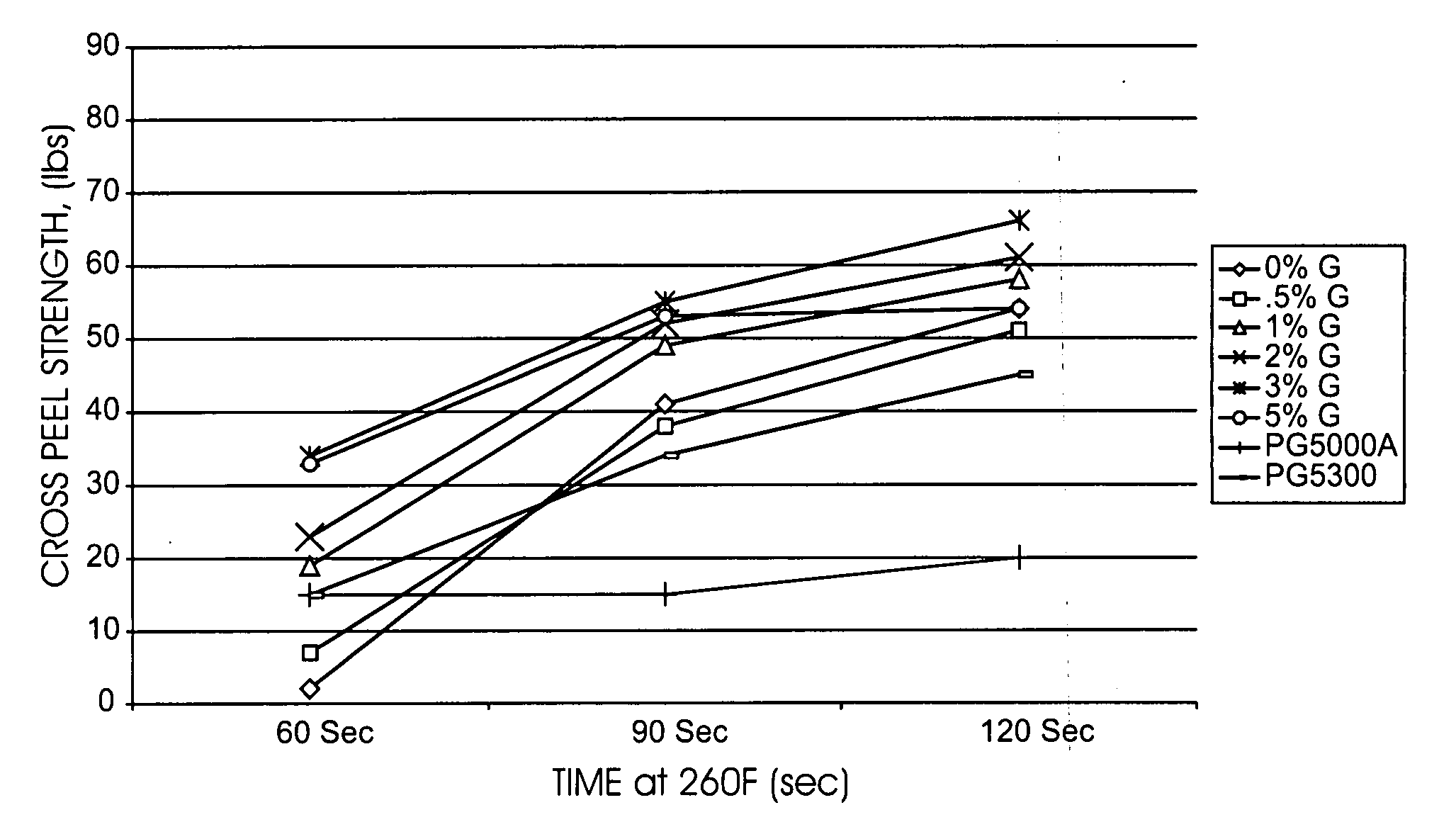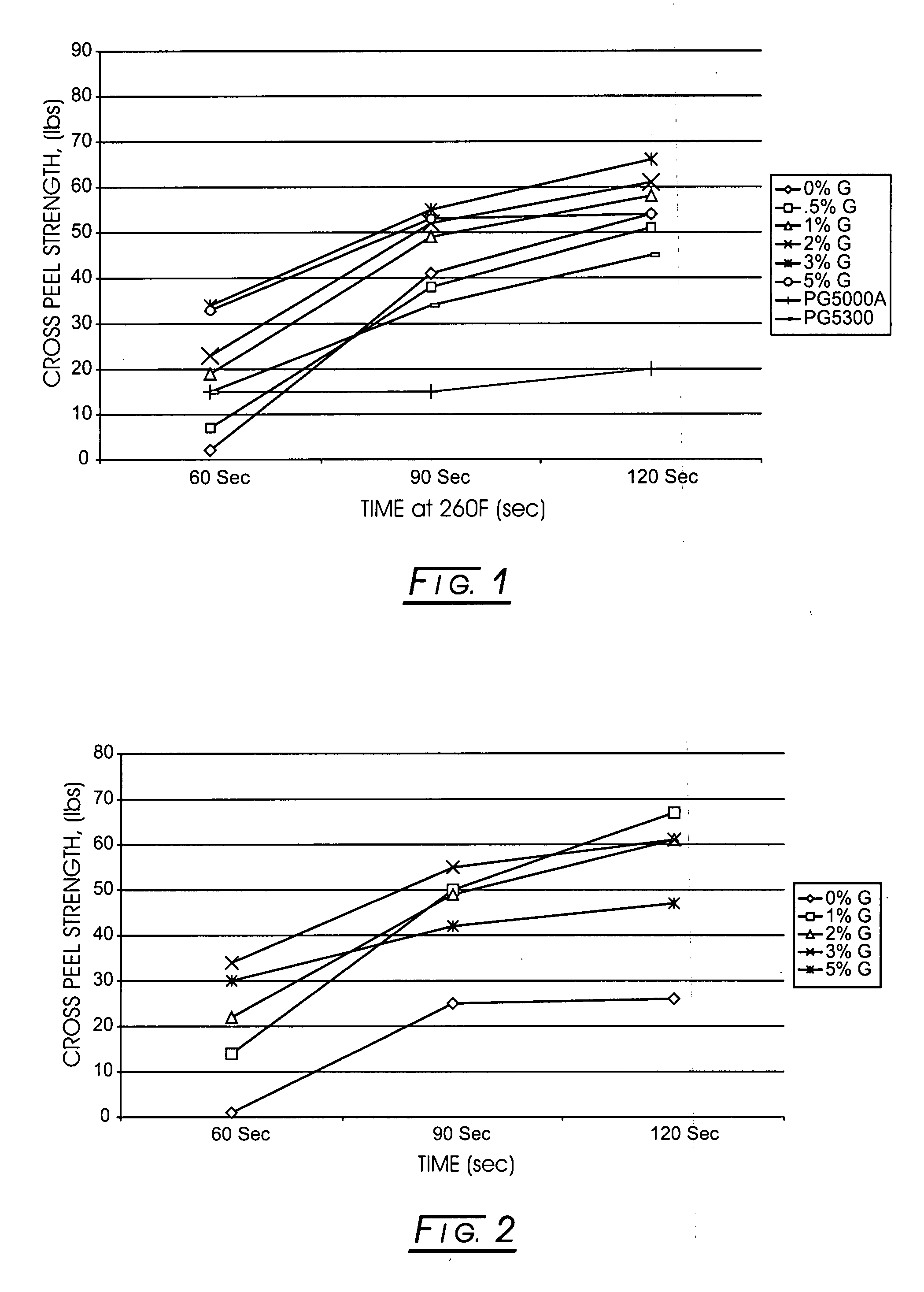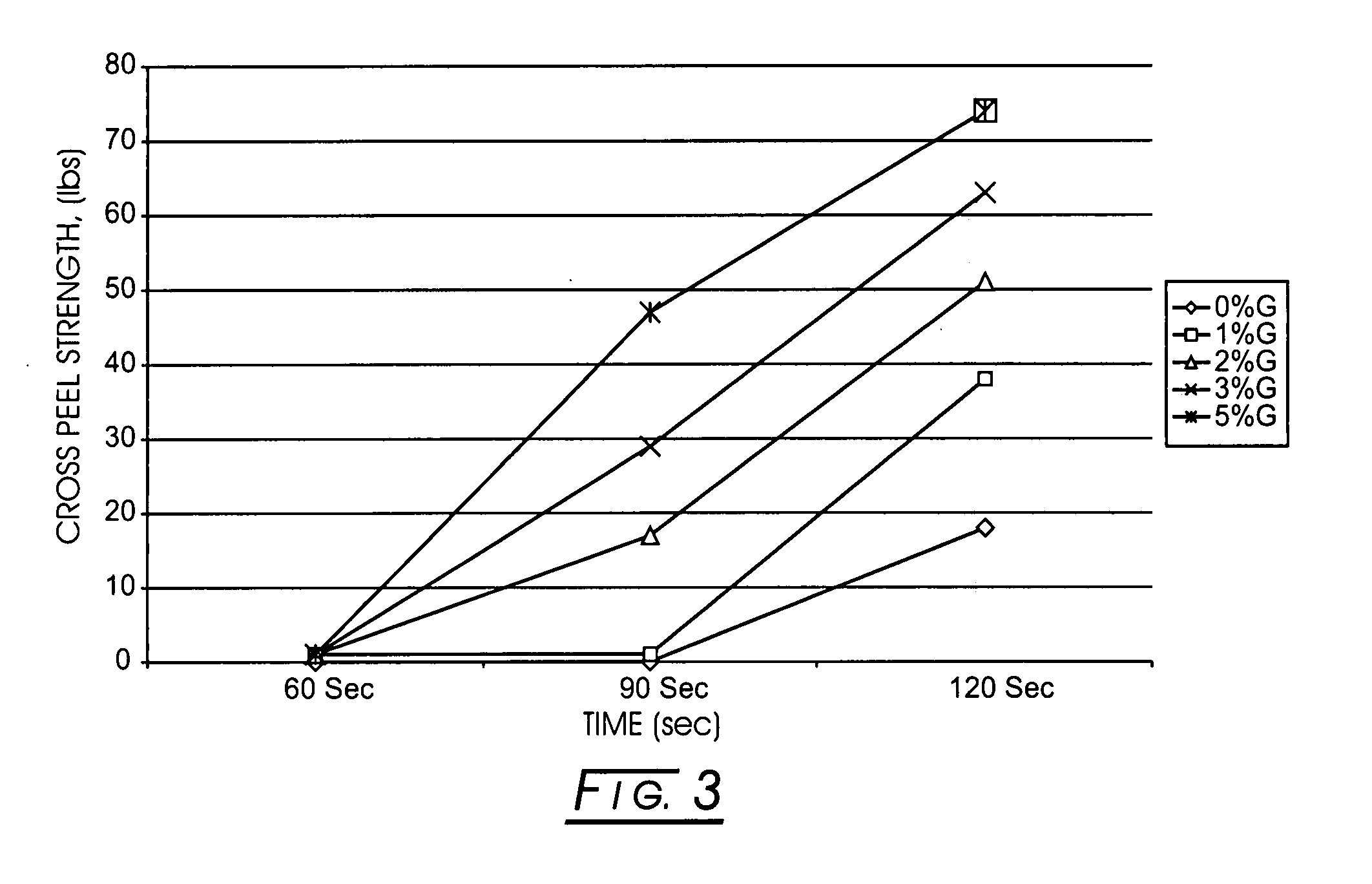Fast cure epoxy adhesive with enhanced adhesion to toughened sheet molding compound
- Summary
- Abstract
- Description
- Claims
- Application Information
AI Technical Summary
Benefits of technology
Problems solved by technology
Method used
Image
Examples
example 1
[0041]Initial work bonding the new class of toughened SMC using commercially available PLIOGRIP® 5000A / 5020B epoxy yielded a mixed failure mode consisting of fiber tear (FT) and adhesive failure (Ad) in both wedge peel and lap shear at 22° and 82° C. Alternate experimental fast cure epoxies incorporating dihydric phenol, polyfunctional amines, and short chain polyols, such as EXP-116C / 31B subject U.S. Ser. No. 11 / 6539,539 and incorporated herein, were evaluated producing good fiber tear in lap shear at 22° and 82° C., but adhesive failure in wedge peel over toughened SMC. These examples demonstrate the need for enhanced adhesion to this new class of toughened SMC while maintaining a faster rate of strength build than the existing commercial two-part epoxy, see Table 1 below.
TABLE 122 C. Lap Shear82 C. Lap ShearWedge Peel(kPa)(kPa)(kg)PG5000A / 5020B2710 90FT 10Ad2010 90FT 10Ad17 AdEXP-116C / 31B2110 FT2050 FT10 27FT 73Ad
example 2
[0042]MB7122-142-2 is EXP-116C / 31B modified with the addition of 8 weight percent of hollow glass spheres, based on the total weight of the formula, and evaluated over toughened SMC. The percent fiber tear was observed to go down over all tests evaluated, 22° C. and 82° C. lap shear and 22° C. wedge peel. MB7122-160B4 removed catechol and the filler package from the formula and observed an improvement in wedge peel fiber tear. MB7122-116-3 utilized tri(dimethyl aminomethyl)phenol, a tertiary amine, and polyamide as primary curatives along with hollow glass spheres, without multifunctional aliphatic amine or catechol and observed positive results in wedge peel fiber tear and 82° C. lap shear. The observation that tertiary amine and aliphatic amine enhanced fiber tear in wedge peel over toughened SMC and the presence of catechol reduced it led to a design of experiments, DOE, to optimize chemistry vs. performance. Formulas and data are shown in Table 2 below; all samples were cured fo...
example 3
[0043]MB7122-179: A 23 factorial designed experiment, DOE, with center points was run for the curative side using p, s-aliphatic and aromatic tertiary amines and hollow glass bubble concentrations as independent variables while the polyamide, liquid rubber, filler package, short chain polyol, and epoxy resin side were held constant. The formulas for this design of experiment are shown below in Table 3 and 4. The ratio of A to B was held constant at 1.6:1.0 parts by weight. The cure was 90 seconds at 127° C. and optionally post baked for 30 minutes at 149° C. Ninety second cure hot cross peel at 127° C., wedge peel, 82° C. lap shear and −30° C. side impact tests were conducted on each formula with the results being shown in Table 5 below.
TABLE 3Epoxy A Side 7122-39AIngredient, IDConcentration (wt-%)Epon 82848.3Epon 580069.9Heloxy 5053.9RCS Talc13.8SPM CaCO320.3TS-7202.8Glycerin1.0
TABLE 4Curative B SideID 7122179-1179-2179-3179-4179-5179-6179-7179-8179-9K548.016.016.016.08.08.08.012.0...
PUM
| Property | Measurement | Unit |
|---|---|---|
| Fraction | aaaaa | aaaaa |
| Fraction | aaaaa | aaaaa |
| Fraction | aaaaa | aaaaa |
Abstract
Description
Claims
Application Information
 Login to View More
Login to View More - R&D
- Intellectual Property
- Life Sciences
- Materials
- Tech Scout
- Unparalleled Data Quality
- Higher Quality Content
- 60% Fewer Hallucinations
Browse by: Latest US Patents, China's latest patents, Technical Efficacy Thesaurus, Application Domain, Technology Topic, Popular Technical Reports.
© 2025 PatSnap. All rights reserved.Legal|Privacy policy|Modern Slavery Act Transparency Statement|Sitemap|About US| Contact US: help@patsnap.com



